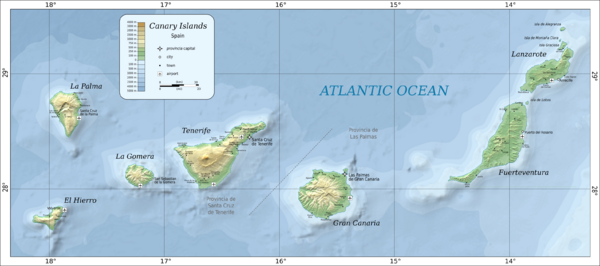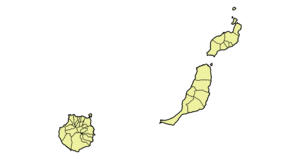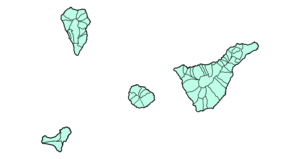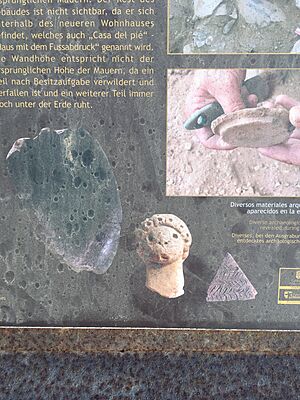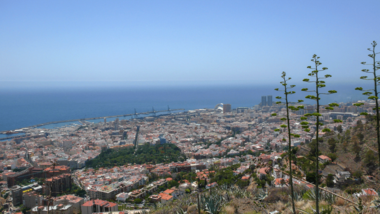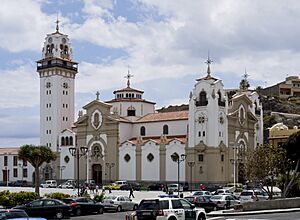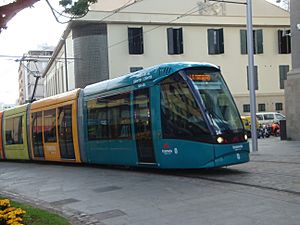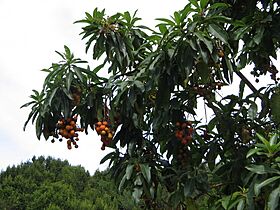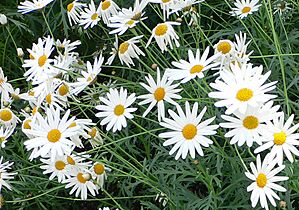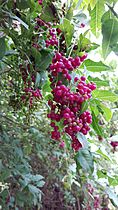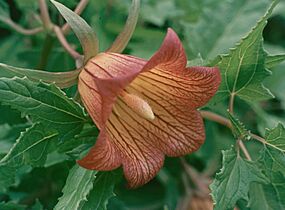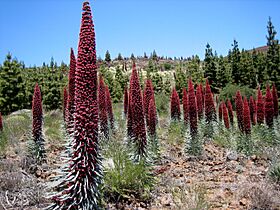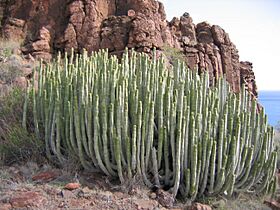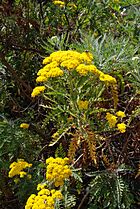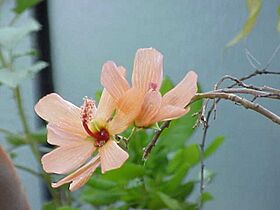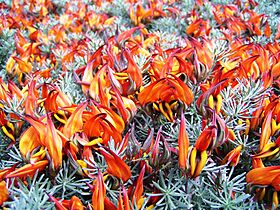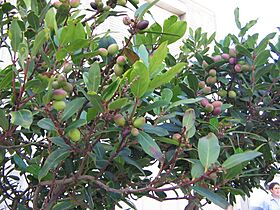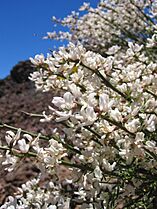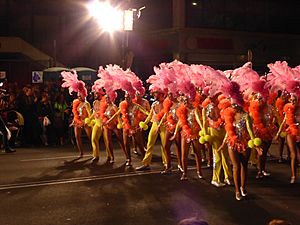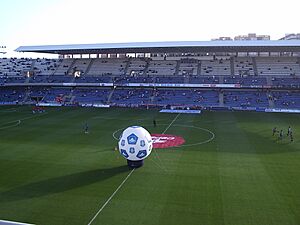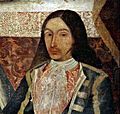Canary Islands facts for kids
Quick facts for kids
Canary Islands
Islas Canarias (Spanish)
|
|||
|---|---|---|---|
|
|||
| Anthem: "Anthem of the Canaries" |
|||
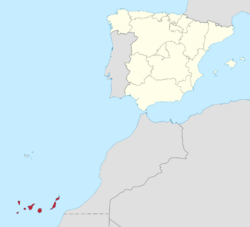
Location of the Canary Islands (red) within Spain
|
|||
| Country | Spain | ||
| Capital | Santa Cruz de Tenerife (executive and legislative) and Las Palmas de Gran Canaria (executive and judicial) 28°0′N 15°45′W / 28.000°N 15.750°W |
||
| Largest city | Las Palmas de Gran Canaria | ||
| Demonym(s) | Canarian canario/-a (Spanish) |
||
| Area | |||
|
• Total
|
7,493 km2 (2,893 sq mi) (1.88% of Spain; 13th) | ||
| Population | |||
|
• 2021 estimate
|
2,172,944 (8th) | ||
|
• Density
|
290/km2 (751.1/sq mi) | ||
| GDP (nominal) | 2022 estimate | ||
|
• Total
|
€49.020 billion | ||
|
• Per capita
|
€22,303 | ||
| Time zone | UTC (WET) | ||
|
• Summer (DST)
|
UTC+1 (WEST) | ||
| ISO 3166 code |
|
||
| Most populated island | Tenerife | ||
| Official language | Spanish | ||
| Statute of Autonomy | 7 November 2018 | ||
| Parliament | Canarian Parliament | ||
| Congress seats | 15 (of 350) | ||
| Senate seats | 14 (of 265) | ||
| HDI (2021) | 0.871 very high * 15th |
||
The Canary Islands (Spanish: Canarias), also called the Canaries, are a group of islands in the Atlantic Ocean. They are part of Spain and are an autonomous community. The closest island is about 100 kilometers (62 miles) west of Morocco. These islands are the southernmost part of Spain.
The Canary Islands are home to about 2.2 million people. This makes them the most populated special territory of the European Union.
There are seven main islands. From largest to smallest, they are Tenerife, Fuerteventura, Gran Canaria, Lanzarote, La Palma, La Gomera, and El Hierro. Another island, La Graciosa, is also populated. Many smaller islands and rocks are also part of the group. Long ago, people called these islands "the Fortunate Isles."
The Canary Islands are a popular place for tourists. Over 16 million people visited in 2023. People love the beaches, warm climate, and natural sights. Maspalomas in Gran Canaria and Mount Teide in Tenerife are very famous. Mount Teide is the highest peak in Spain. It is also the third tallest volcano in the world, measured from its base on the ocean floor.
The islands have warm summers and mild winters. The climate is tropical near the sea. Some areas are green, while others are like a desert. The high mountains are great for looking at stars. This is why there are two big observatories here: the Teide Observatory and Roque de los Muchachos Observatory.
In 1927, the Canary Islands were divided into two provinces. In 1982, they became an autonomous community. The cities of Santa Cruz de Tenerife and Las Palmas de Gran Canaria share the role of capital.
During the time of sailing ships, the islands were a key stop for Spanish ships. These ships were on their way to explore and settle the Americas. They used the strong northeasterly winds to help them sail.
Contents
- What's in a Name?
- The Islands of the Canaries
- Island Facts
- Nature and Landscape
- How the Islands are Governed
- Island History
- People of the Islands
- Economy and Environment
- Getting Around the Islands
- Health Care
- Amazing Wildlife
- Fun Holidays and Festivals
- Science and Technology
- Sports and Fun
- Images for kids
- See also
What's in a Name?
The name Islas Canarias probably comes from the Latin words Canariae Insulae. This means "Islands of the Dogs." It might be because there were many large dogs or monk seals there. The island of Gran Canaria was once called Canaria. The islands' coat-of-arms even shows dogs.
Some people think the name comes from a Berber tribe called Canarii in Morocco. But the islands are not named after the canary bird. Instead, the birds are named after the islands!
The Islands of the Canaries
The Canary Islands stretch from west to east. They include El Hierro, La Palma, La Gomera, Tenerife, Gran Canaria, Fuerteventura, Lanzarote, and La Graciosa. North of Lanzarote are smaller islands like Montaña Clara, Alegranza, Roque del Este, and Roque del Oeste. These are part of the Chinijo Archipelago. Northeast of Fuerteventura is Lobos Island. There are also tiny rocks like Roques de Anaga and Garachico.
- The Canary Islands
El Hierro: The Westernmost Island
El Hierro is the westernmost island. It is about 269 square kilometers (104 sq mi) in size. It is the second smallest of the main islands. It has the fewest people, with about 10,800 residents. The entire island was named a Biosphere Reserve in 2000. Its capital city is Valverde. Long ago, people thought El Hierro was the end of the known world.
Fuerteventura: The Oldest Island
Fuerteventura is the second largest island, covering about 1,660 square kilometers (641 sq mi). UNESCO has declared it a biosphere reserve. It is the oldest island and has been shaped by erosion. Its highest point is the Peak of the Bramble, at 807 meters (2,648 ft). The capital is Puerto del Rosario.
Gran Canaria: A Continent in Miniature
Gran Canaria has about 847,000 people. Its capital, Las Palmas de Gran Canaria, is the most populated city. It shares the capital status with Santa Cruz de Tenerife. Gran Canaria is about 1,560 square kilometers (602 sq mi). Famous landmarks include Roque Nublo (1,813 m / 5,948 ft) and Pico de las Nieves (1,949 m / 6,394 ft). The beautiful Maspalomas Dunes are in the south.

La Gomera: Ancient and Green
La Gomera is about 370 square kilometers (143 sq mi). It is the second least populated island, with about 21,000 people. UNESCO has also named it a biosphere reserve. It is one of the oldest islands geologically. The capital is San Sebastian de La Gomera. The famous Garajonay National Park is located here.
Lanzarote: Volcanic Landscapes
Lanzarote is the easternmost island. It is one of the oldest and shows signs of recent volcanic activity. It covers about 846 square kilometers (327 sq mi). It has about 149,000 people, including nearby islets. The capital is Arrecife.
Chinijo Archipelago: Small Islands, Big Nature
The Chinijo Archipelago includes La Graciosa, Alegranza, Montaña Clara, Roque del Este, and Roque del Oeste. It is about 41 square kilometers (16 sq mi). Only La Graciosa is populated, with about 658 people. La Graciosa is the largest island in this group and the smallest inhabited Canary Island.
La Graciosa: The Eighth Island?
La Graciosa is a volcanic island north of Lanzarote. It is part of a natural park. In 2018, the Spanish Senate called it "the eighth Canary Island." However, it is still managed as part of Lanzarote. It is the smallest and least populated of the main islands.
La Palma: The Beautiful Island
La Palma has about 82,000 people and covers 708 square kilometers (273 sq mi). The entire island is a biosphere reserve. A volcano called Cumbre Vieja erupted here in September 2021. La Palma is the second-highest island in the Canaries. Its highest point is Roque de los Muchachos at 2,423 meters (7,949 ft). The capital is Santa Cruz de La Palma.
Tenerife: The Largest and Most Populated
Tenerife is the largest island, covering about 2,034 square kilometers (785 sq mi). It is also the most populated island in Spain, with over 904,000 residents. Two main cities are here: the capital Santa Cruz de Tenerife and San Cristóbal de La Laguna. La Laguna is a World Heritage Site and has the oldest university in the Canary Islands. Teide, at 3,715 meters (12,188 ft), is the highest peak in Spain and a World Heritage Site.

Island Facts
Here's a quick look at the main islands:
| Island | Capital | Area (km2) | Population (2010) |
|---|---|---|---|
| El Hierro | Valverde | 268.71 | 10,960 |
| Fuerteventura | Puerto del Rosario | 1,660 | 103,492 |
| Gran Canaria | Las Palmas de Gran Canaria | 1,560.1 | 845,676 |
| La Gomera | San Sebastián | 369.76 | 22,776 |
| Lanzarote | Arrecife | 845.94 | 141,437 |
| La Palma | Santa Cruz de La Palma | 708.32 | 86,324 |
| Tenerife | Santa Cruz de Tenerife | 2,034.38 | 906,854 |
| La Graciosa | Caleta de Sebo | 29.05 | 658 |
Nature and Landscape
The Canary Islands are part of a special natural area called Macaronesia. This area also includes the Azores, Cape Verde, Madeira, and the Savage Isles. All the islands were formed by volcanoes.
The climate changes across the islands. Western islands like El Hierro, La Palma, and La Gomera are wetter. They have green laurisilva forests. As you go east towards Africa, the islands become drier. Fuerteventura and Lanzarote are almost like deserts.
Gran Canaria is known as a "continent in miniature" because it has so many different landscapes. The north of Tenerife is green, while the south is dry. The island rises almost 4,000 meters (13,123 ft) high. At high altitudes, you can find forests of the special Canary Island pine. Many plants, like the pine and the dragon tree, are unique to these islands.
Island Climate
The Canary Islands have a warm subtropical or tropical weather. The ocean and trade winds keep it mild. Most islands have a hot desert or semi-desert climate. But in the middle of La Gomera, Tenerife, and La Palma, it's more humid. Here, you can find laurisilva cloud forests.
Volcanoes and Mountains

The islands were formed by a "hotspot" in the Earth's crust. The Canary Islands are the only place in Spain where volcanoes have erupted in modern times. Some volcanoes are still active, like the one on El Hierro in 2011.
Volcanic islands often have steep cliffs. The most recent eruption was at Cumbre Vieja on La Palma in 2021. Teide volcano on Tenerife is the highest mountain in Spain. It is also the third tallest volcano on Earth if you measure from its base on the ocean floor.
Here are the highest mountains on each main island:

| Mountain | Elevation (m) | Island |
|---|---|---|
| Teide | 3715 | Tenerife |
| Roque de los Muchachos | 2426 | La Palma |
| Pico de las Nieves | 1949 | Gran Canaria |
| Pico de Malpaso | 1501 | El Hierro |
| Garajonay | 1487 | La Gomera |
| Pico de la Zarza | 812 | Fuerteventura |
| Peñas del Chache | 670 | Lanzarote |
| Aguja Grande | 266 | La Graciosa |
Island Symbols
The official natural symbols of the Canary Islands are the canary bird and the Canary Island palm tree.
National Parks
The Canary Islands have four of Spain's thirteen national parks. This is more than any other region! Two are UNESCO World Heritage Sites. The others are part of Biosphere Reserves.
| Park | Island | Area (km2) | Year Designated | UNESCO Status |
|---|---|---|---|---|
| Caldera de Taburiente National Park | La Palma | 46.9 | 1954 | Part of the La Palma Biosphere Reserve since 2002 |
| Garajonay National Park | La Gomera | 39.86 | 1981 | World Heritage Site since 1986 |
| Teide National Park | Tenerife | 189.9 | 1954 | World Heritage Site since 2007 |
| Timanfaya National Park | Lanzarote | 51.07 | 1974 | Part of the Lanzarote Biosphere Reserve since 1993 |
Teide National Park is the oldest and largest national park in the Canary Islands. It is also the most visited in Spain. In 2010, it was the most visited national park in Europe. The park's main feature is the Teide volcano.
How the Islands are Governed


The Canary Islands have their own government, called the Parliament of the Canary Islands. The current leader is Fernando Clavijo Batlle. There are 70 elected members in the regional parliament.
The islands also have 14 seats in the Spanish Senate. Some are directly elected by the people. Others are chosen by the regional parliament.
The Canary Islands are divided into two provinces: Las Palmas and Santa Cruz de Tenerife. Their capitals, Las Palmas de Gran Canaria and Santa Cruz de Tenerife, are also the capitals of the whole autonomous community. Each of the seven main islands has its own local council called a Cabildo Insular. Each island is also divided into smaller towns and areas called municipalities.
Canarian Identity
Some people in the Canary Islands feel a strong sense of Canarian identity. They see themselves as Canarian first, or equally Canarian and Spanish. A small number of people support the idea of the islands becoming fully independent.
Defense
The Spanish Armed Forces are responsible for defending the Canary Islands. The Army, Navy, Air Force, and Civil Guard all have bases here.
Island History
Early Inhabitants
Before humans arrived, giant lizards, giant rats, and giant tortoises lived on the Canaries. People first came to the islands at least 2,000 years ago. They were likely related to the Berbers from North Africa. They arrived by boat on the eastern islands. These early people were called the Guanches. They lived in natural caves and had a rich culture. They made pottery, tools, and cave paintings. Their society was often passed down through the mother's side of the family. They worshipped the sun, moon, and natural features.
European Visitors
Sailors from Majorca, Portugal, and Genoa visited the islands from the 1300s. Lancelotto Malocello settled on Lanzarote in 1312.
Spanish Conquest
In 1402, Spanish explorers began to take over the islands. This was a long and difficult process. The native Guanches fought back for almost a century. The conquest was done in two main ways:
- Aristocratic Conquest: Early conquests were led by nobles for their own gain. The Spanish Crown only gave them permission. This included the Norman conquest (1402-1405) of Lanzarote, El Hierro, and Fuerteventura. Later, Castilian nobles took over La Gomera around 1450.
- Royal Conquest: From 1478 to 1496, the Spanish Crown directly led the conquest. They took over Gran Canaria, La Palma, and Tenerife. The conquest ended in 1496 when Tenerife was finally controlled.

The native population sadly declined due to war, diseases, and being forced into slavery. The Canary Islands then became part of the Kingdom of Castile.
After the Conquest
After the conquest, the Spanish started growing sugarcane and then grapes for wine. These became important trade goods. To work the fields, many people were forced into slavery. This included native Canarians and many Africans brought from North and Sub-Saharan Africa. The cities of Santa Cruz de Tenerife and Las Palmas de Gran Canaria became important stops for Spanish traders and explorers on their way to the Americas. This trade brought a lot of wealth to the islands.
The wealth also attracted pirates and privateers. In 1599, a Dutch fleet attacked Las Palmas de Gran Canaria. They tried to burn the city but were eventually forced to leave. In 1618, Barbary pirates attacked Lanzarote and La Gomera, taking many captives. In 1797, a British fleet led by Horatio Nelson attacked Santa Cruz de Tenerife. The British were defeated, and Nelson lost his right arm in the battle.
The Canary Islands were also important for other historical voyages. The fleet that founded Fort Jamestown in the United States stopped here in 1606. The First Fleet on its way to Australia also passed through Tenerife in 1788.
Recent History
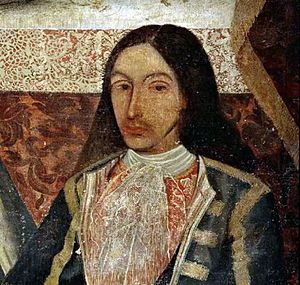
In the 1800s, the sugar economy struggled. A new crop, cochineal (a dye insect), helped the islands' economy. Many Canary Islanders moved to the Americas, especially to Venezuela, Puerto Rico, and Cuba, looking for better opportunities.
In 1927, the Canary Islands were divided into two provinces due to rivalry between Las Palmas and Santa Cruz de Tenerife.
During the Spanish Civil War (1936-1939), Francisco Franco took control of the islands. After the war, there was a harsh crackdown on political opposition.
After Franco's death, the Canary Islands gained autonomy in 1982. They now have their own government and parliament.
Capitals of the Islands
Today, the Canary Islands are the only Spanish region with two capitals: Santa Cruz de Tenerife and Las Palmas de Gran Canaria.
Historically, the capital moved around. Las Palmas de Gran Canaria was the first city to act as a capital. Later, the capital moved to San Cristóbal de La Laguna on Tenerife. In 1723, it moved to Santa Cruz de Tenerife. In 1833, Santa Cruz officially became the sole capital. But in 1927, the islands were split into two provinces, and each capital city became a provincial capital. Finally, in 1982, both cities were named capitals of the autonomous community.
People of the Islands
The Canary Islands have a population of about 2.15 million people (2019). This makes it the eighth most populated region in Spain. The population density is about 287 people per square kilometer.
Most people live on Tenerife (917,841) and Gran Canaria (851,231). Many Europeans, especially from Italy, Germany, and the UK, have moved to the islands. Also, many people from Venezuela and Cuba have moved back to the islands.
Religions
The main religion in the Canary Islands is Roman Catholicism. This has been the case for over 500 years. The Virgin of Candelaria is the patron saint of the Canary Islands. Two Catholic saints were born here: Peter of Saint Joseph de Betancur and José de Anchieta.
The islands have two Catholic dioceses, each led by a bishop. Besides Catholicism, there are also smaller groups of Muslims, Protestants, Jehovah's Witnesses, and Hindus. Some people also follow older native religions or other faiths like Buddhism and Judaism.
Economy and Environment

The economy of the Canary Islands mainly relies on tourism. Tourism makes up about 32% of the islands' economy. Around 12 million tourists visit each year. Building new hotels and homes also makes up a big part of the economy.
Farmers grow tropical crops like bananas and tobacco. These are sent to Europe and the Americas. Some people worry that the islands' natural resources, especially water, are being used too much.
The Canary Islands are part of the European Union. They use the Euro (€) as their currency. They have a local sales tax instead of VAT.
The islands are working to use more renewable energy. Studies show they have a lot of potential for it. They could even get 100% of their energy from renewable sources by 2050.
The combination of high mountains, clean air, and being close to Europe makes the Roque de los Muchachos peak on La Palma a great place for telescopes.
Getting Around the Islands


The Canary Islands have eight airports. They also have two of Spain's main ports. There is a good network of highways and roads. Sometimes, traffic can be heavy on Tenerife and Gran Canaria.
Large ferry boats and fast ferries connect most of the islands. They carry passengers, cargo, and vehicles. Fast ferries are quicker, while regular ferries are slower but can carry more.
The largest airport is Gran Canaria Airport. Tenerife has two airports: Tenerife North Airport and Tenerife South Airport. Tenerife's airports handle the most passengers in the Canary Islands.
The port of Las Palmas is the busiest for cargo. The port of Santa Cruz de Tenerife is the busiest for fishing. The port of Los Cristianos (Tenerife) has the most ferry passengers.
Airports
- Tenerife South Airport – Tenerife
- Tenerife North Airport – Tenerife
- César Manrique-Lanzarote Airport – Lanzarote
- Fuerteventura Airport – Fuerteventura
- Gran Canaria Airport – Gran Canaria
- La Palma Airport – La Palma
- La Gomera Airport – La Gomera
- El Hierro Airport – El Hierro
Ports

- Port of Puerto del Rosario – Fuerteventura
- Port of Arrecife – Lanzarote
- Port of Playa Blanca—Lanzarote
- Port of Santa Cruz de La Palma – La Palma
- Port of San Sebastián de La Gomera – La Gomera
- Port of La Estaca – El Hierro
- Port of Las Palmas – Gran Canaria
- Port of Arinaga – Gran Canaria
- Port of Agaete – Gran Canaria
- Port of Los Cristianos – Tenerife
- Port of Santa Cruz de Tenerife – Tenerife
- Port of Garachico – Tenerife
- Port of Granadilla – Tenerife
Health Care
The Servicio Canario de Salud is the main health care provider. It is part of the Canary Islands Government.
- Hospital Nuestra Señora de los Reyes – El Hierro
- Hospital General de La Palma – La Palma
- Hospital Nuestra Señora de Guadalupe – La Gomera
- Hospital Universitario Nuestra Señora de Candelaria – Tenerife
- Hospital Universitario de Canarias – Tenerife
- Hospital del Sur de Tenerife – Tenerife
- Hospital del Norte de Tenerife – Tenerife
- Hospital Universitario de Gran Canaria Doctor Negrín – Gran Canaria
- Hospital Universitario Insular de Gran Canaria – Gran Canaria
- Hospital General de Lanzarote Doctor José Molina Orosa – Lanzarote
- Hospital General de Fuerteventura – Fuerteventura
Amazing Wildlife
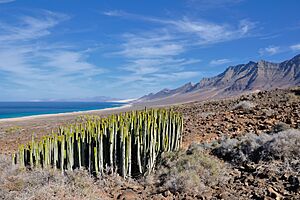
Animals
The Canary Islands are home to many interesting animals. You can find birds like the canary, the red-billed chough (called graja), and different types of finches.
There are also unique lizards, like the El Hierro giant lizard. Mammals include the Canarian shrew and the Canary big-eared bat.
Extinct Animals
Long ago, the Canary Islands had even more unique animals. These included giant lizards, giant tortoises, and giant rats. Sadly, these animals are now extinct.
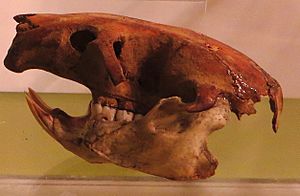
Ocean Life
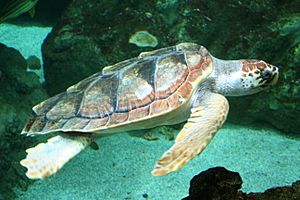
The ocean around the Canary Islands is full of diverse marine life. You can see many kinds of fish, including sharks, rays, and eels. There are also sponges, jellyfish, crabs, and corals.
Five types of marine turtles visit the islands. The most common is the loggerhead sea turtle. While they don't seem to breed here now, they might have in the past. You can also spot many different kinds of cetaceans (whales and dolphins).
Native Plants
The islands have many beautiful and unique plants.
Fun Holidays and Festivals

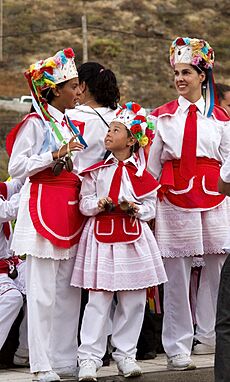
The Canary Islands celebrate many holidays. Some are international or national, and others are special to the region or a single island. The official day for the Canary Islands is Canary Islands Day on May 30th. This day celebrates the first meeting of the Parliament of the Canary Islands in 1983.
Here are some common holidays:
| Date | Name | What it celebrates |
|---|---|---|
| 1 January | New Year | A global celebration. |
| 6 January | Epiphany | A Christian holiday. |
| March or April | Holy Thursday and Holy Friday | Christian holidays before Easter. |
| 1 May | International Workers' Day | A day to celebrate workers. |
| 30 May | Canary Islands Day | The day the Canary Islands Parliament first met. |
| 15 August | Assumption of Mary | A Catholic holiday. Also the day of the Virgin of Candelaria, the patron saint of the Canary Islands. |
| 12 October | Fiesta Nacional de España | Spain's National Holiday, celebrating the discovery of the Americas. |
| 1 November | All Saints' Day | A Catholic holiday. |
| 6 December | Constitution Day | Celebrates Spain's Constitution. |
| 8 December | Immaculate Conception | A Catholic holiday. |
| 25 December | Christmas | Celebrates the birth of Jesus. |
Each island also has its own special holiday to honor its patron saint:
| Date | Island | Saint/Virgin |
|---|---|---|
| 2 February | Tenerife | Our Lady of Candelaria |
| 5 August | La Palma | Our Lady of the Snows |
| 8 September | Gran Canaria | Our Lady of the Pine |
| 15 September | Lanzarote | Our Lady of Dolours |
| Third Saturday of September | Fuerteventura | Our Lady of the Peña |
| 24 September | El Hierro | Our Lady of the Kings |
| Monday after first Saturday of October | La Gomera | Our Lady of Guadalupe |
The most famous festival is Carnival. It is celebrated on all islands, especially in Santa Cruz de Tenerife and Las Palmas de Gran Canaria. People dress up in costumes and have parades in February or March.
Science and Technology
In the 1960s, Gran Canaria was chosen for a ground station to support NASA's space program. The Maspalomas Station helped with the Apollo 11 Moon landings. Today, it still helps with satellite communications.
Because the islands are far from city lights, they are great for astronomical observatories. These include the Teide Observatory on Tenerife and the Roque de los Muchachos Observatory on La Palma.
The Instituto de Astrofísica de Canarias (Astrophysical Institute of the Canaries) is based on Tenerife. There are also institutes for bio-organic studies, linguistics, and tropical diseases.
Sports and Fun
The Canary Islands have unique traditional sports:
- Canarian wrestling (lucha canaria): Two opponents try to throw each other to the ground in a special ring.
- Game of the sticks (palo canario): People fence with long sticks. This might have come from shepherds using their walking sticks.
- Shepherd's jump (salto del pastor): People use a long stick to vault over gaps in the hills.
The two main football teams are CD Tenerife and UD Las Palmas. UD Las Palmas plays in Spain's top league, La Liga. CD Tenerife plays in the second division. When they play each other, it's called the Canary Islands derby.
The islands' mountains are also popular for ultra running races. These include the CajaMar Tenerife Bluetrail and Transgrancanaria. An Ironman Triathlon is held yearly on Lanzarote.
Famous Athletes
Many talented athletes come from the Canary Islands:
- Paco Campos (footballer)
- Nicolás García Hemme (Taekwondo Silver Medalist)
- Sergio Rodríguez (basketball player)
- David Silva (footballer, World Cup winner)
- Juan Carlos Valerón (footballer)
- Pedro (footballer, World Cup winner)
- Carla Suárez Navarro (tennis player)
- Paola Tirados (synchronized swimmer, Olympic medalist)
- Jesé (footballer)
- Pedri (footballer)
- Misa Rodríguez (footballer, Women's World Cup winner)
- Nico Paz (footballer)
Images for kids
-
View of Fataga, Gran Canaria
-
San Cristóbal de La Laguna in 1880 (Tenerife)
-
Alonso Fernández de Lugo presenting the captured native Guanche kings of Tenerife to the Catholic Monarchs
-
Maps of the Canary Islands drawn by William Dampier during his voyage to New Holland in 1699
-
Amaro Pargo (1678–1741), a famous corsair and merchant from Tenerife.
-
The port of Las Palmas in 1912
-
Auditorio de Tenerife by Santiago Calatrava, a famous building in Santa Cruz de Tenerife.
-
Basilica of the Virgin of Candelaria (Patroness of the Canary Islands) in Candelaria, Tenerife
-
The dunes of Maspalomas in Gran Canaria is one of the tourist attractions.
-
A banana plantation in San Andrés y Sauces
-
A Binter Canarias Embraer 195 E2 at the Galician airport of Vigo. Binter is the biggest airline of the Canary Islands.
-
Bus Station—Estación de Guaguas also known as El Hoyo (The hole)—at San Telmo Park, Las Palmas de Gran Canaria
-
Port of Las Palmas, the largest port in the Canary Islands
-
Canary Island spurge in Fuerteventura
-
A loggerhead sea turtle, the most common sea turtle in the Canary Islands.
-
The Dance of the Dwarves is a big part of the Bajada de la Virgen de las Nieves festival in Santa Cruz de La Palma.
-
Dancers in traditional costumes in El Tamaduste (El Hierro).
-
Band of Agaete in the Traída del Agua (Gran Canaria).
See also
 In Spanish: Canarias para niños
In Spanish: Canarias para niños
History
- Battle of Santa Cruz de Tenerife (1797)
- Pyramids of Güímar
- Tenerife airport disaster; the deadliest commercial aviation disaster in history.
Geography
- Cumbre Vieja, a volcano on La Palma
- Islands of Macaronesia
Culture
- Canarian cuisine
- Canarian Spanish
- Religion in Canary Islands
- Silbo Gomero, a whistled language, is an indigenous variant of Spanish
- Virgin of Candelaria (Patron saint of Canary Islands)













